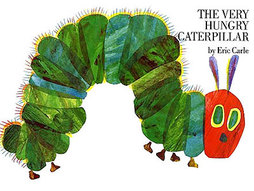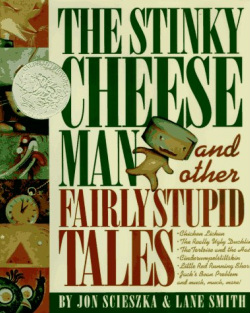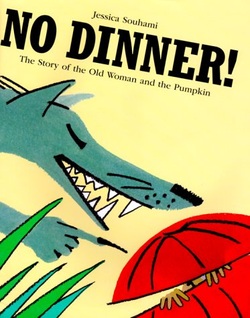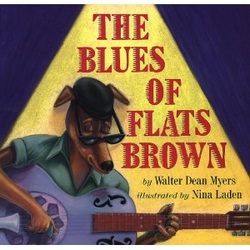Tuesday, June 14, 2011

Team Name: Group 2
Group 2: Art, Lisset, Leslie, Stephanie, Johneshia, Sharmayne
Part 3: Chapters 5-7
Reading Skills: Imagery and Tone
Reading in Part 3: The Fixed by Annie Dillard
Picture Book: The Very Hungry Caterpillar by Eric Carle
General Goals: To teach the kids about imagery and tone in a fun way. I taught them about how everyone has their own tone and how they showed me this was through drawing pictures of butterflies.
Vocabulary: Imagery-when an author uses words that describe a person, object, or setting that paint mental images in the reader's mind. Tone-the emotional quality of an article that reveals an author's attitude toward a subject.
Quiz Questions:
1. Where was the caterpillar born?
On a leaf
2, What was the first thing he ate?
A Leaf
3. What was the name of the home he built for himself?
A Cocoon
4. How long was he in the cocoon?
A few days
5. What did he turn into?
A beautiful butterfly
Comprehension Questions:
What was the tone in the book?
Happy
What kinds of imagery did you see?
Lots of pictures and descriptive words
How did you add your own tone to your drawing?
Simply by being myself
Agenda (Minute-By-Minute): Introduce myself, get to know them a little bit, talk about imagery and tone, read the book to them, discuss the comprehension questions, give them the quiz, have them draw a picture of a butterfly, have them describe the butterfly using tone and imagery, say goodbye!
Group 2: Art, Lisset, Leslie, Stephanie, Johneshia, Sharmayne
Part 3: Chapters 5-7
Reading Skills: Imagery and Tone
Reading in Part 3: The Fixed by Annie Dillard
Picture Book: The Very Hungry Caterpillar by Eric Carle
General Goals: To teach the kids about imagery and tone in a fun way. I taught them about how everyone has their own tone and how they showed me this was through drawing pictures of butterflies.
Vocabulary: Imagery-when an author uses words that describe a person, object, or setting that paint mental images in the reader's mind. Tone-the emotional quality of an article that reveals an author's attitude toward a subject.
Quiz Questions:
1. Where was the caterpillar born?
On a leaf
2, What was the first thing he ate?
A Leaf
3. What was the name of the home he built for himself?
A Cocoon
4. How long was he in the cocoon?
A few days
5. What did he turn into?
A beautiful butterfly
Comprehension Questions:
What was the tone in the book?
Happy
What kinds of imagery did you see?
Lots of pictures and descriptive words
How did you add your own tone to your drawing?
Simply by being myself
Agenda (Minute-By-Minute): Introduce myself, get to know them a little bit, talk about imagery and tone, read the book to them, discuss the comprehension questions, give them the quiz, have them draw a picture of a butterfly, have them describe the butterfly using tone and imagery, say goodbye!
Thursday, June 16, 2011

Team Name: Group 2
Group 2: Art, Lisset, Leslie, Stephanie, Johneshia, Sharmayne
Part 5: Chapters 10-13
Reading Skills: Bias, Point of View, Euphemisms, and Doublespeak
Reading in Part 5: Beyond Sterotypes of Cops by Samual Walker and Charles Katz
Picture Book: The Stinky Cheese Man and other Fairly Stupid Tales by Jon Scieszka and Lane Smith
General Goals: To teach the kids about Bias, Point of View, Euphemisms, and Doublespeak by reading them a funny book on twisted fairytales.
Vocabulary: Bias-astrong leaning in either a positive or negative direction. Point of View-an opinion, attitude, or judgment on the part of an individual. Euphemisims-subsituting inoffensive words or phrases for ones that are likely to offend someone. Doublespeak-purposely misleading others and obscuring the truth.
Quiz Questions:
1. Who was the narrator of the story?
Jack
2, What happened when the Ugly Duckling grew up?
He was still ugly
3. Where did the Giant drag Jack?
To the next page
4. How did the Stinky Cheese Man die?
He fell into the river
5. Which character was the loudest?
The Red Hen
Comprehension Questions:
What bias opinion did the author have on fairytales?
A negative one
What kind of point of view do most people have on fairytales?
That they're always happy
What is an example of ephemism in the book?
The Ugly Duckling Story
Agenda (Minute-By-Minute): Greet each other, talk about the vocab, read the book to them, discuss the quiz questions, talk about the comprehension questions, say goodbye!
Group 2: Art, Lisset, Leslie, Stephanie, Johneshia, Sharmayne
Part 5: Chapters 10-13
Reading Skills: Bias, Point of View, Euphemisms, and Doublespeak
Reading in Part 5: Beyond Sterotypes of Cops by Samual Walker and Charles Katz
Picture Book: The Stinky Cheese Man and other Fairly Stupid Tales by Jon Scieszka and Lane Smith
General Goals: To teach the kids about Bias, Point of View, Euphemisms, and Doublespeak by reading them a funny book on twisted fairytales.
Vocabulary: Bias-astrong leaning in either a positive or negative direction. Point of View-an opinion, attitude, or judgment on the part of an individual. Euphemisims-subsituting inoffensive words or phrases for ones that are likely to offend someone. Doublespeak-purposely misleading others and obscuring the truth.
Quiz Questions:
1. Who was the narrator of the story?
Jack
2, What happened when the Ugly Duckling grew up?
He was still ugly
3. Where did the Giant drag Jack?
To the next page
4. How did the Stinky Cheese Man die?
He fell into the river
5. Which character was the loudest?
The Red Hen
Comprehension Questions:
What bias opinion did the author have on fairytales?
A negative one
What kind of point of view do most people have on fairytales?
That they're always happy
What is an example of ephemism in the book?
The Ugly Duckling Story
Agenda (Minute-By-Minute): Greet each other, talk about the vocab, read the book to them, discuss the quiz questions, talk about the comprehension questions, say goodbye!
Tuesday, June 21, 2011

Team Name: Group 2
Group 2: Art, Lisset, Leslie, Stephanie, Johneshia, Sharmayne
Part 4: Chapters 8-9
Reading Skills: Thesis, Mode of Writing, and Narrative Mode
Reading in Part 4: On Aging by Maya Angelo
Picture Book: The Story of the Old Woman and the Pumpkin by Jessica Souhami
General Goals: To teach the kids about Thesis, Mode of Writing, and Narrative Mode
by reading them a narrative picture book.
Vocabulary: Thesis-the main idea. Mode of Writing-four primary modes of writing that help achieve the author's purpose. Narrative Mode- tells a story, either true or fictional.
Quiz Questions:
1. Who was the narrator of the story?
The Old Woman
2, What was the old woman's excuse for the animals not eating her?
She wanted to get fat
3. Where did the old woman go?
To her grandchild's house
4. How did she get home?
In a pumpkin
5. Which character finally realized the truth about the pumpkin?
The Wolf
Comprehension Questions:
What was the thesis in the book?
The Old Woman trying not to get eaten
What kind of modes of writing do you usually see in the books you read?
Narrative, usually
What kind of mode of writing was your favoroite to learn about and why?
Narrative because it is the most fun
Agenda (Minute-By-Minute): Greet each other, talk about the vocab, read the book to them, discuss the quiz questions, talk about the comprehension questions, say goodbye!
Group 2: Art, Lisset, Leslie, Stephanie, Johneshia, Sharmayne
Part 4: Chapters 8-9
Reading Skills: Thesis, Mode of Writing, and Narrative Mode
Reading in Part 4: On Aging by Maya Angelo
Picture Book: The Story of the Old Woman and the Pumpkin by Jessica Souhami
General Goals: To teach the kids about Thesis, Mode of Writing, and Narrative Mode
by reading them a narrative picture book.
Vocabulary: Thesis-the main idea. Mode of Writing-four primary modes of writing that help achieve the author's purpose. Narrative Mode- tells a story, either true or fictional.
Quiz Questions:
1. Who was the narrator of the story?
The Old Woman
2, What was the old woman's excuse for the animals not eating her?
She wanted to get fat
3. Where did the old woman go?
To her grandchild's house
4. How did she get home?
In a pumpkin
5. Which character finally realized the truth about the pumpkin?
The Wolf
Comprehension Questions:
What was the thesis in the book?
The Old Woman trying not to get eaten
What kind of modes of writing do you usually see in the books you read?
Narrative, usually
What kind of mode of writing was your favoroite to learn about and why?
Narrative because it is the most fun
Agenda (Minute-By-Minute): Greet each other, talk about the vocab, read the book to them, discuss the quiz questions, talk about the comprehension questions, say goodbye!
Thursday, June 23, 2011

Team Name: Group 2
Group 2: Art, Lisset, Leslie, Stephanie, Johneshia, Sharmayne
Intro and Parts 1-2: Chapters 1-4
Reading Skills: Topics, Main Ideas, and Details
Reading in Intro and Parts 1-2: Louis Armstrong, Ambassador of Jazz by Studs Terkel
Picture Book: The Blues of Flats Brown by Walter Dean Myers
General Goals: To teach the kids about Topics, Main Ideas, and Details by reading them a book about jazz.
Vocabulary: Topic-a single word or phrase and is often the noun that is mentioned most frequently. Main Idea-all sentences support this key point. Details-supporting sentences that reinforce the main idea.
Quiz Questions:
1. Who was the owner of Flats?
Grubbs
2, What happened that caused Flats to run away?
He had to fight another dog
3. Where did they first go?
Anywhere they could find
4. How did Grubbs find them?
He followed them
5. Where did Flats end up?
In Georgia
Comprehension Questions:
What was the topic in the book?
Flats Brown
What was the authors main idea?
Never underestimate a person's character
What supporting details could you find in the book?
ALots of descriptive words
Agenda (Minute-By-Minute): Greet each other, talk about the vocab, read the book to them, discuss the quiz questions, talk about the comprehension questions, say goodbye!
Group 2: Art, Lisset, Leslie, Stephanie, Johneshia, Sharmayne
Intro and Parts 1-2: Chapters 1-4
Reading Skills: Topics, Main Ideas, and Details
Reading in Intro and Parts 1-2: Louis Armstrong, Ambassador of Jazz by Studs Terkel
Picture Book: The Blues of Flats Brown by Walter Dean Myers
General Goals: To teach the kids about Topics, Main Ideas, and Details by reading them a book about jazz.
Vocabulary: Topic-a single word or phrase and is often the noun that is mentioned most frequently. Main Idea-all sentences support this key point. Details-supporting sentences that reinforce the main idea.
Quiz Questions:
1. Who was the owner of Flats?
Grubbs
2, What happened that caused Flats to run away?
He had to fight another dog
3. Where did they first go?
Anywhere they could find
4. How did Grubbs find them?
He followed them
5. Where did Flats end up?
In Georgia
Comprehension Questions:
What was the topic in the book?
Flats Brown
What was the authors main idea?
Never underestimate a person's character
What supporting details could you find in the book?
ALots of descriptive words
Agenda (Minute-By-Minute): Greet each other, talk about the vocab, read the book to them, discuss the quiz questions, talk about the comprehension questions, say goodbye!
